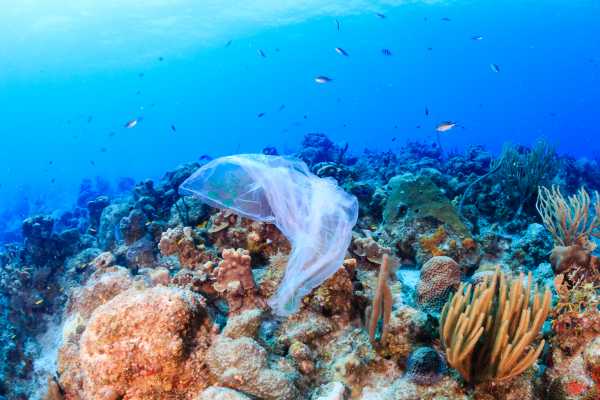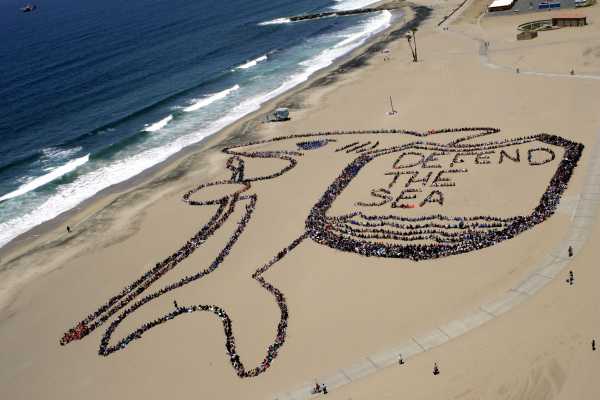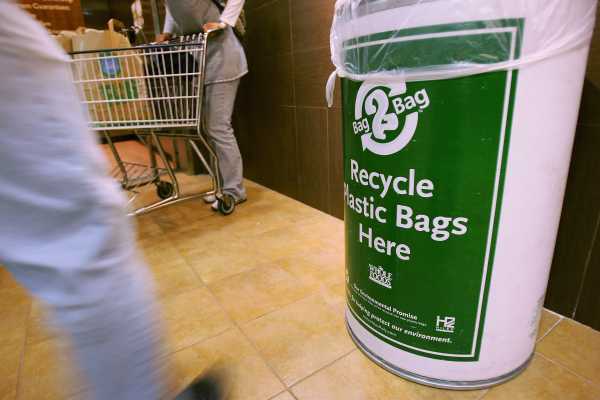
Ocean plastic has, in a pretty short time, become a surprisingly potent international environmental movement.
For one, there’s more awareness now about the astounding quantity of plastic — between 4.7 and 12.8 million metric tons — floating around in the ocean. As the World Economic Forum put it, this volume is “equivalent to dumping the contents of one garbage truck into the ocean per minute.”
Garbage patches the size of small countries floating on the surface of the ocean have become another powerful image of the problem, as have photos and videos of marine life choking on and filled with plastic.
In the past couple of months, we’ve also seen a major mobilization around keeping plastic out of the ocean. “Beat Plastic Pollution” was the focus of UN World Environmental Day on June 5, inspiring hundreds of beach cleanup events around the world and a remarkable commitment from India to ban single-use plastics by 2022.
Elsewhere in the world, Australian states began plastic bag bans this month. Britain, Scotland, Chile, India, and Taiwan have also announced plans to phase out all single-use plastics. In the US, the plastic reduction efforts have been largely centered around plastic straw bans.

But what about large-scale, long-term plastic reduction? Shouldn’t we also be working toward that?
There’s actually a lot we don’t know yet to answer these questions well. Here are the big issues that still need to be addressed before we can successfully move forward.
Where is the plastic in the ocean? And where is it coming from?
Ocean plastic research is a relatively new field, with the first comprehensive count of ocean plastic published in Science just three years ago. The authors of that paper found that the amount of plastic ranges from anywhere between 4.7 and 12.8 million metric tons.
Since this initial report, researchers at the Santa Barbara Marine Conservancy discovered that the plastic at the ocean surface only accounts for about 1 percent of all ocean plastic. Although others have found that a large percent is absorbed into the ocean floor, it’s still not clear where all the plastic is in the ocean.
We are also not really sure what objects are the biggest component of ocean plastic. Until recently, most research into ocean plastic sources came from beach cleanups; as a result, the most common objects found were items that humans use near beaches, like cigarettes, straws, and cups.
But earlier this year, researchers published a report after measuring the trash in the Great Pacific Garbage Patch. They found the largest source of plastic to be from fishing equipment.
These statistics may not be completely accurate. Although plastic doesn’t degrade, it does break down into microplastics, which can be as small as a millimeter in diameter. The effects of microplastics on human health are still not well understood. But there’s growing evidence that they can harm animals that ingest them.
How do we regulate plastic pollution at the international level?
In early June, the G7 countries signed an Ocean Plastics Charter to emphasize their commitment to significantly reduce plastic pollution by 2030. While the charter is a great start, it leaves a lot to be desired.
It did not refer to regulation of fishing equipment, which is believed to be the largest source of ocean plastic. It did not demand reduction of plastic production. And notably missing from the charter were the United States and Japan. Greenpeace called the proposals “tepid,” saying they were mostly voluntary and “must be met with significant legislative action.”
The UN made “Beat Plastic Pollution” its theme for World Environment Day this year. But so far it has only made suggestions that individual countries can choose to follow. Although several countries have announced plans to phase out all single-use plastics over the next decade, banning single-use plastic will not be enough to combat larger sources of pollution.
In the case of fishing gear, there are no worldwide laws to ebb this abandonment; rather, most efforts have been from environmental and nonprofit organizations. One example is the organization NetWorks, which works to help fishermen in the Philippines convert abandoned fishing nets, or “ghost nets,” into carpets that they can then sell.
What materials can replace plastic?
Let’s face it: Plastic is amazingly versatile. It is the basis for a wide range of materials, from styrofoam, to polyester, to PVC, to synthetic rubber. It’s used in our cell phones, eyeglasses, and tennis balls.
Plastic is polymer, which means that it is made by combining a bunch of subunits in various ways. Most of these subunits are petroleum-based compounds, meaning they come from natural gas, coal, or crude oil. And based on the ways these compounds are attached to each other, the final plastic product can be delicate and bendable (think Saran wrap) or tough and bulletproof (think Kevlar). Most importantly, it’s cheap to produce.
One popular area of research is creating “bioplastics,” which use cellulose as their starting compound instead of petroleum. Since cellulose is organic, these materials are biodegradable. You may have heard of the corn-based plastic substitute known as PLA, an example of a bioplastic.
But one of the biggest issues with bioplastics is that their production is not very environmentally friendly. Since they are plant-based, they require lots of land, pesticides, and fertilizer that contribute to greenhouse gas emission and ozone depletion. They also require special composting facilities to break down. A study done by the UK Environmental Agency found that cotton totes must be used over 300 times be as sustainable as a plastic bag, given the amount of resources it takes to make it.
Outside of the field of bioplastics, scientists at Colorado State University recently developed a plastic alternative using γ-butyrolactone, a compound that is found in certain cleaning products. It’s better than current plastics because it can be made in mild conditions and is easy to reuse and recycle. But it also costs a lot to make.
While some of this research is promising and has resulted in fun alternatives like sorghum flour spoons and pasta straws, we have still not found an adequate replacement for plastic that would be biodegradable while not being prohibitively expensive.
How can we improve recycling?
In a recycling facility, plastic gets melted down and turned into pellets that are sold and repurposed. And since plastic is not biodegradable, all plastic that doesn’t get recycled ends up in landfills or the ocean for centuries.
Researchers at the University of California at Santa Barbara found that only 9 percent of all plastic we have produced has been recycled. A big part of this statistic is that people don’t always place their trash in the right bin. But a lot of plastic can’t be recycled because it may be too dirty, or it gets entangled in recycling equipment. And each type of plastic (indicated by those numbers you see in the little triangles) needs to be recycled separately.

A perspective published in Science last year identified problem areas in our current recycling methods: It is inefficient to have to sort plastic by type, chemical recycling requires too much energy, and only some types of plastic polymers can even be broken down.
It actually requires a lot of time, energy, and fuel to recycle plastic, and a cost-benefit analysis found that recycling plastic might not even be worth the resources it takes. Environmental groups largely agree that of the three R’s, recycling should be the last resort, at least until more effective and efficient waste management is enforced.
How can we convince more humans to demand political action to address the plastic problem?
The term “environmental psychology” was first coined in 1935. For years, the field was interested in questions of how our surroundings affect us. Researchers looked at the best ways to design offices to increase productivity or how a child’s home environment could influence development.
Lately, they’ve also been looking at how to encourage people to take greater responsibility for the action around environmental crises.
Nick Nash is a fellow in the social and environmental psychology department at the University of Cardiff. He specifically focuses on how pro-environmental behavior can be encouraged, especially when the environment may not be people’s biggest concern.
“One of the most pernicious consequence is an assumed trade-off between environment and economy … so other issues are perceived to be competing with the environment,” he wrote in an email. “Similarly, culturally ingrained ideas, e.g. about social status, aspiration, and consumption, are also often counter to environmental betterment.”
In other words, making environmentalism a social norm is one of the best ways to get people to be more aware of their behavior. Using the plastic straw ban as an example, he explained, “if everybody else in the restaurant is using them, and the context condones their use (e.g. straws on tables or put into drinks when served), then this increases the likelihood that an individual will act in accordance.”
He explained ways to increase the odds of a practice becoming a social norm; for example, getting people to make explicit commitments, getting celebrities or well-liked people to publicize their own actions, and raising awareness about easy-to-follow behaviors.
We are starting to see some of this with plastic straws in the US. There’s a trending hashtag, #StopSucking. Chelsea Clinton, Neil Degrasse Tyson, Russell Crowe, Tom Brady, Sonam Kapoor, and Tom Felton have all pledged to “just say no” when handed a plastic straw.
But it’s clear we still have a long, long way to go.
Sourse: vox.com






